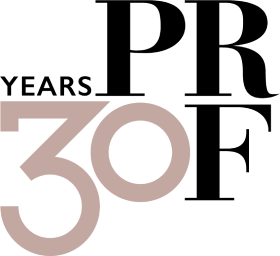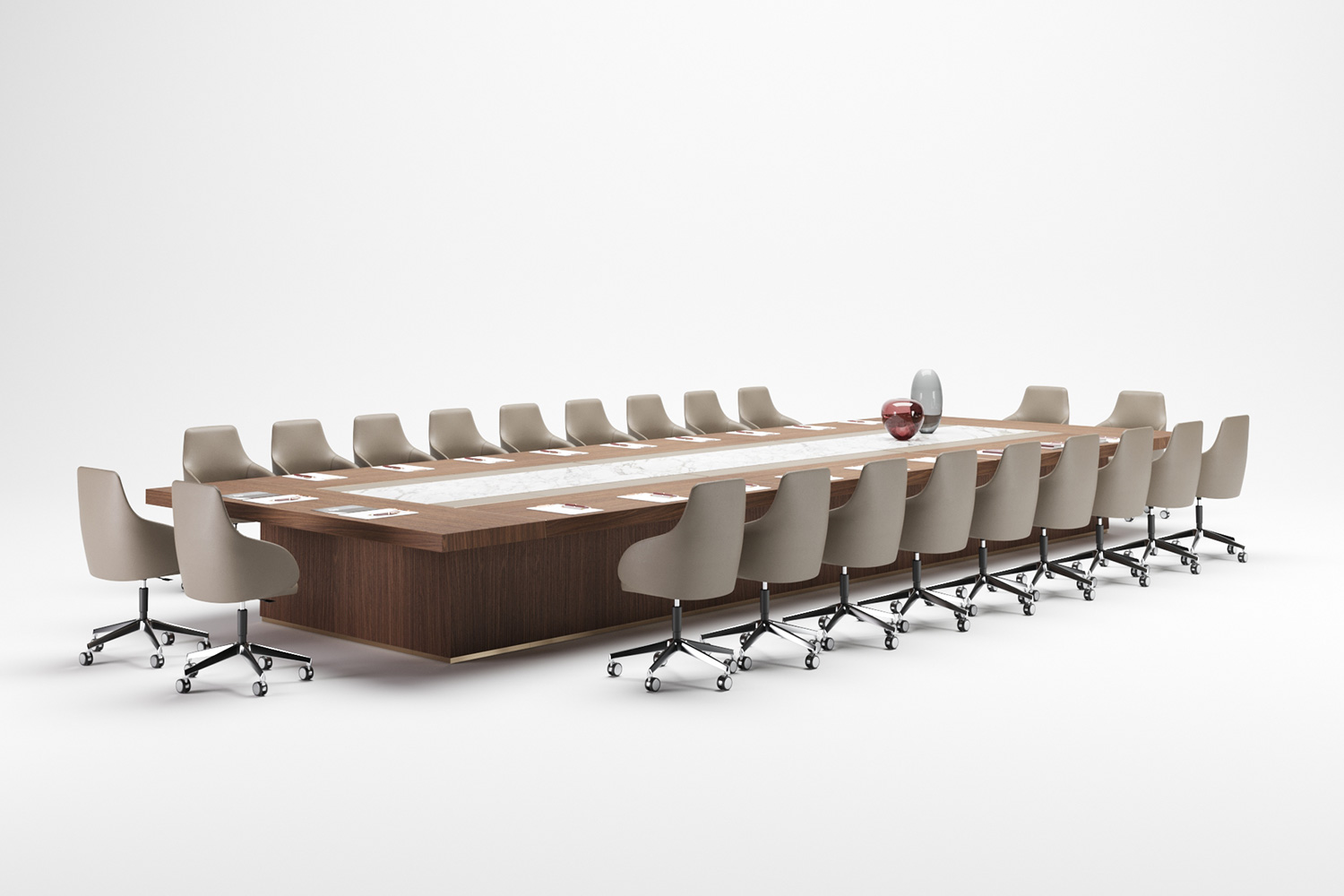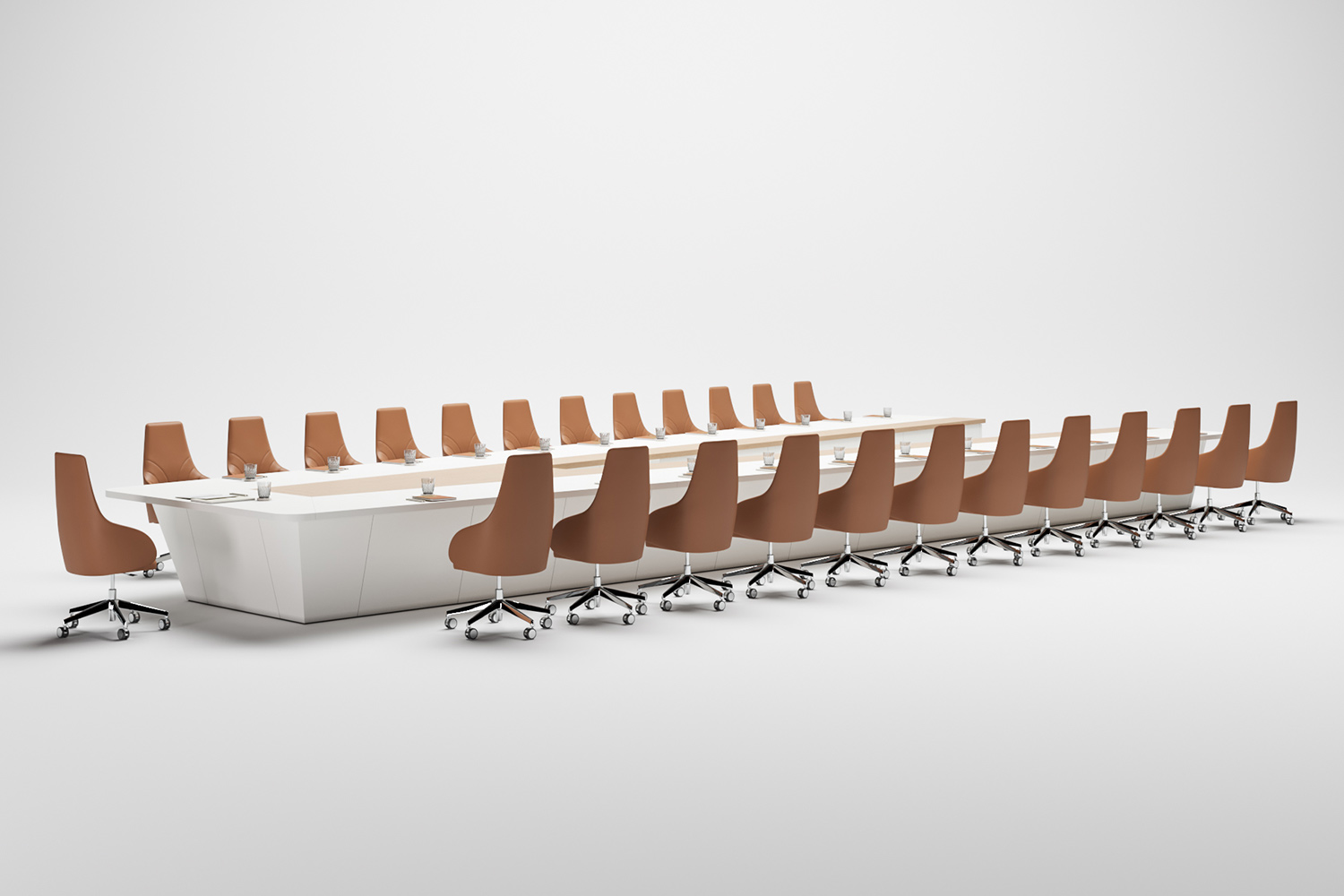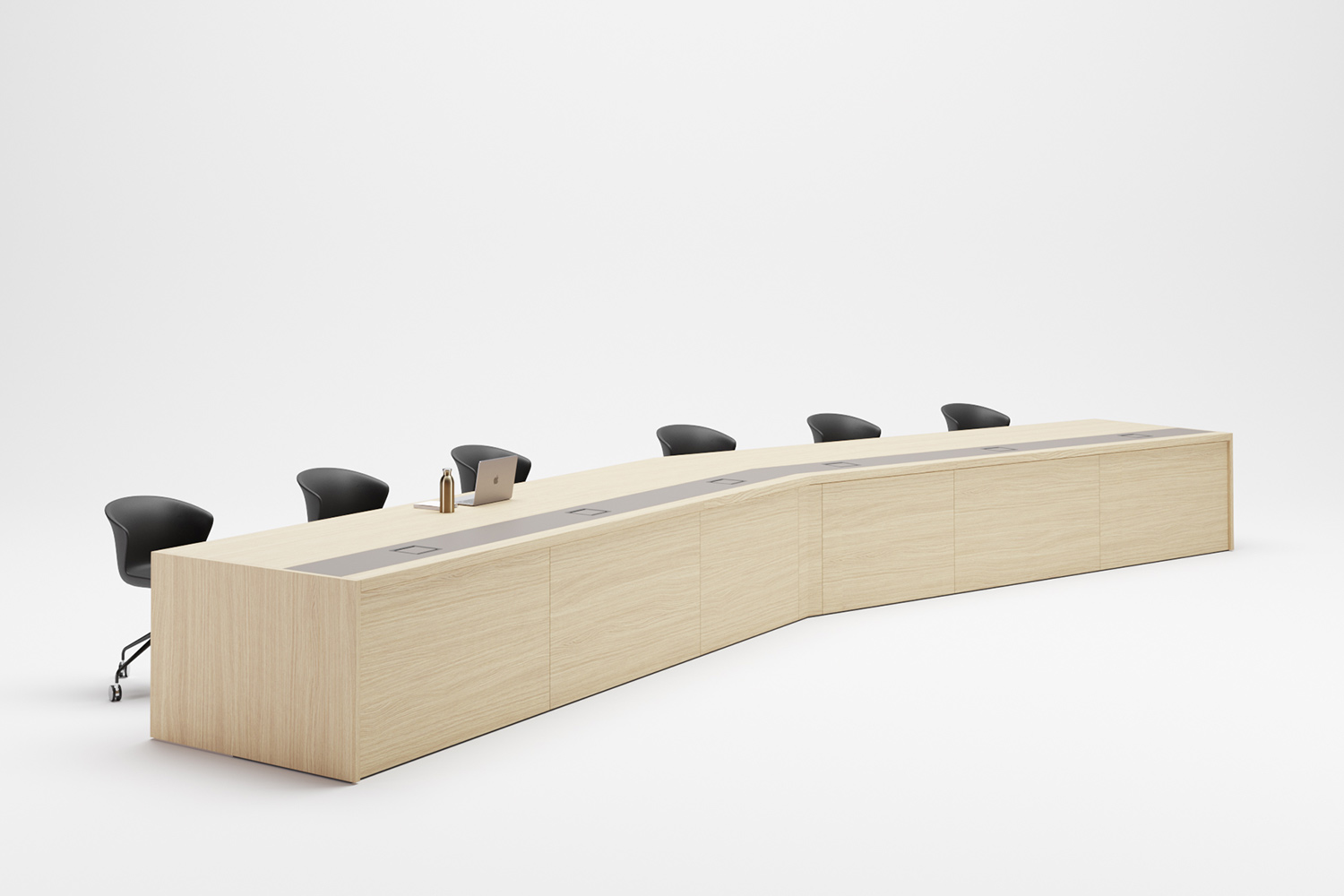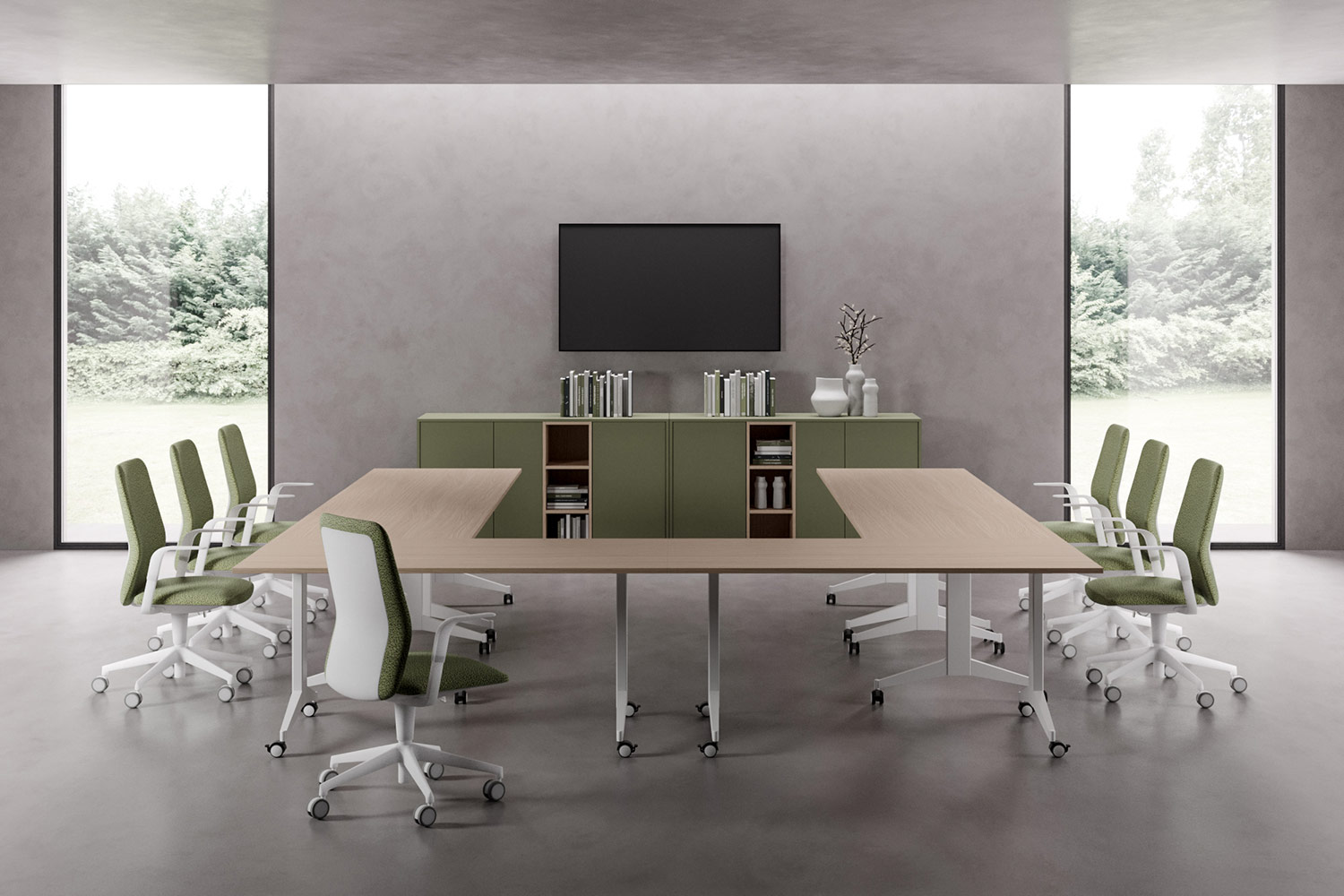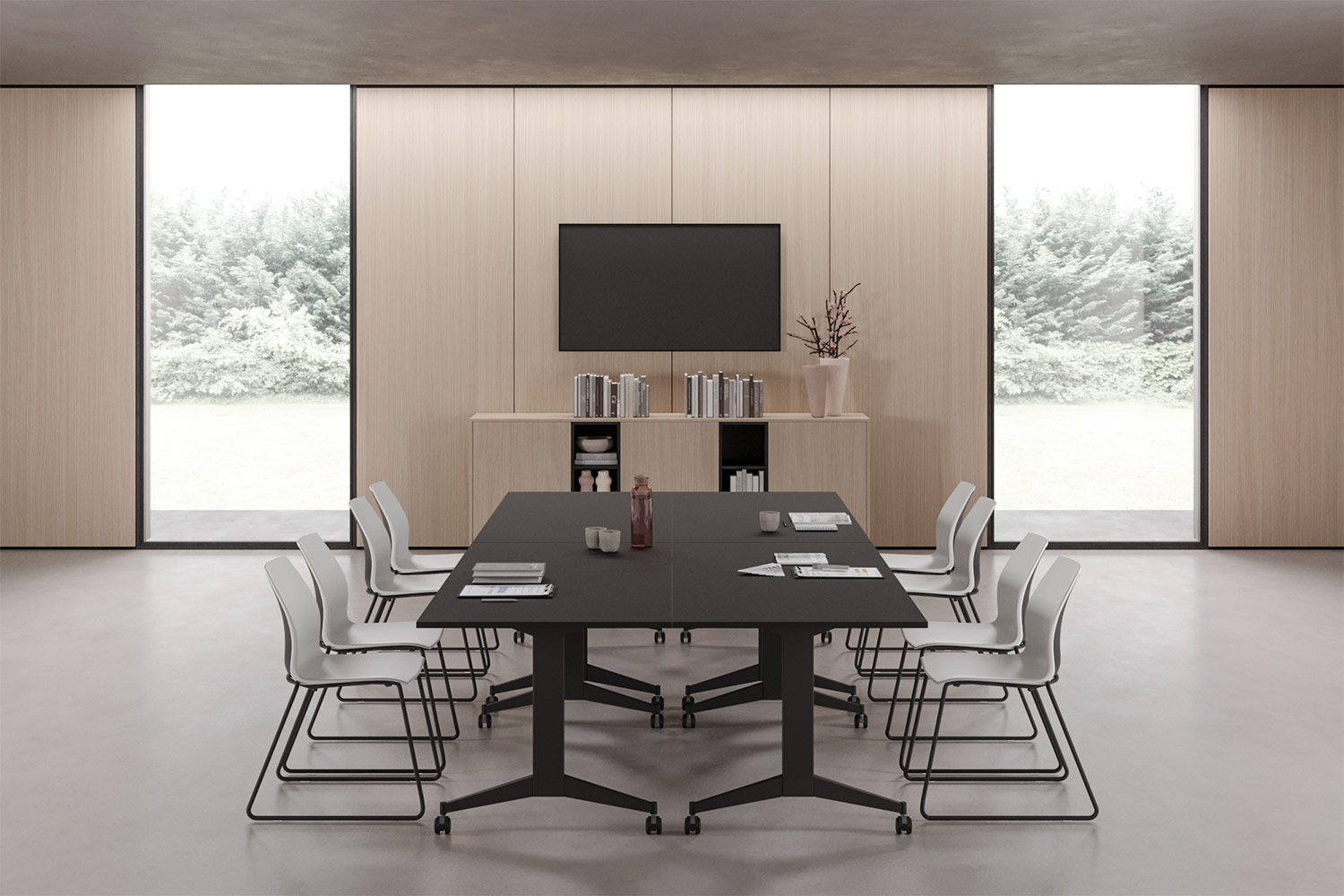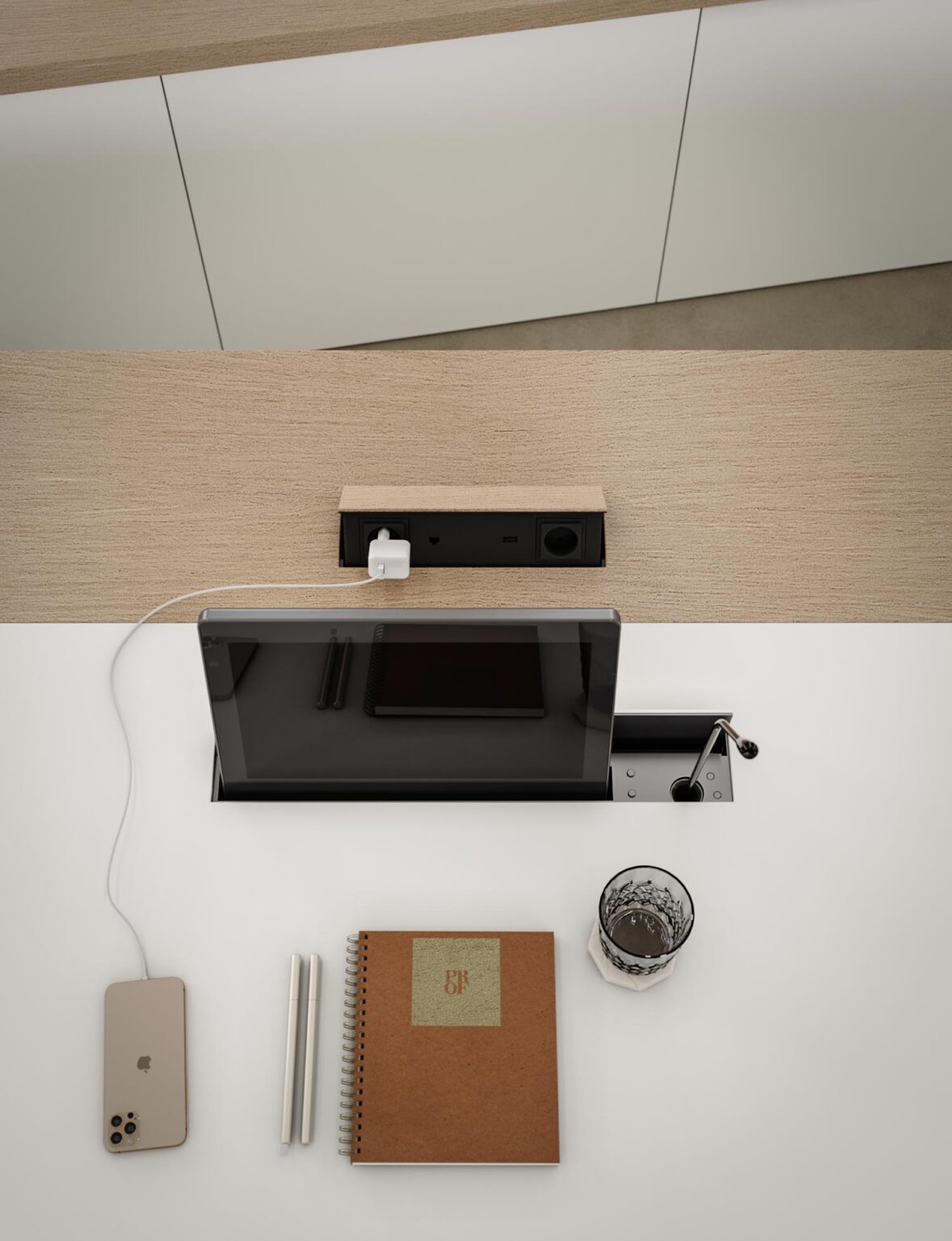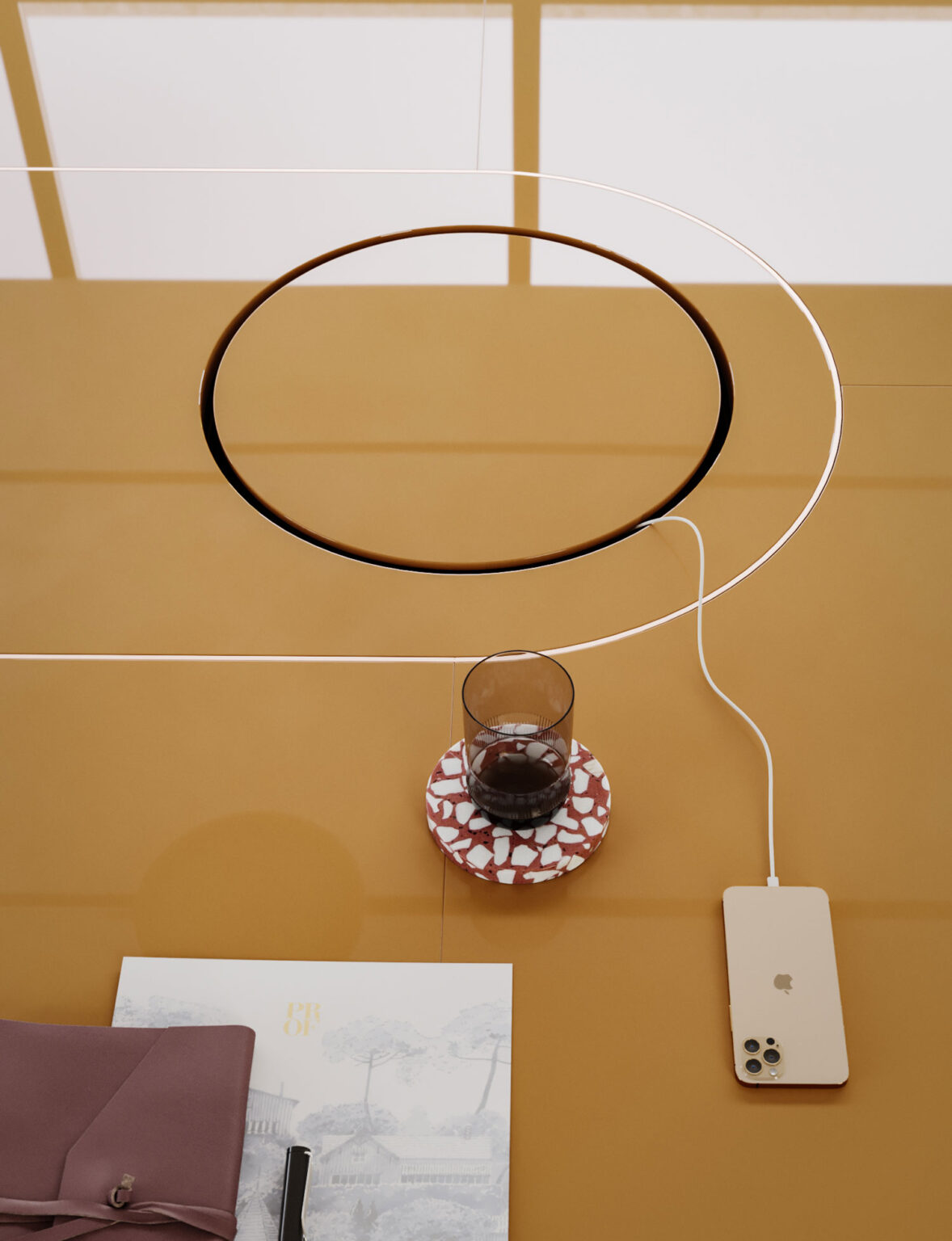The conference table that makes every meeting more productive
The conference table that makes every meeting more productive
How to design spaces that enhance communication, efficiency, and corporate image.
In today’s business world, where collaboration is key, the meeting room has become the heart of strategic decision-making. But how much impact does the conference table really have on meeting productivity? The answer is simple: more than you might think. The table’s design is not just about aesthetics, it’s a true work tool.
Here are a few tips to help make your meetings more efficient and productive.
1. Table shape: every configuration in service of communication
- Round/oval tables
Round or oval conference tables are among the best options for encouraging active participation. Their soft, edge-free shapes help create an inclusive atmosphere, making each participant feel equally involved in the conversation.
- Rectangular tables
With their linear design, rectangular tables emphasize the hierarchical structure of a meeting. They highlight leadership positions and decision-making roles effectively.
- V- or U-shaped tables
These configurations are ideal when the goal is to promote direct dialogue between participants while keeping the speaker at the center. They offer optimal visibility toward the focal point of the room, encouraging structured yet dynamic interaction.
- Gull-wing tables
Perfect for training rooms, this shape ensures that all participants have a clear view of the presenter and projected content. It promotes attentive listening, making it the ideal conference table for educational sessions, workshops, and corporate presentations.
2. Modularity and flexibility: customized spaces
Modular tables, whether curved or rectangular, are today’s most versatile solution for dynamic, collaboration-driven companies. Often equipped with integrated wheels and easy-to-connect units, they allow real-time reconfiguration of spaces. From casual brainstorming to full-team meetings, they support a wide range of needs. This strategic choice optimizes workspace usage and encourages smoother, more effective collaboration.
3. Integrated technology: the digital core of the meeting room
A modern conference table must come with built-in tech features. In addition to power outlets, USB ports, and wireless charging, today’s meeting tables should include:
- discreet cable management systems to maintain a clean, uncluttered workspace
- easily accessible electrical ports for all participants
- slots for monitors, microphones, and video conferencing tools, crucial for hybrid meetings and remote communication
Technology integration transforms the table from a simple surface into a powerful tool for connection and collaboration.
4. Premium materials: luxury that communicates strength
Beyond functionality, a conference table also reflects brand identity. High-end materials like wood, marble, or leather convey professionalism, elegance, and a deep attention to detail. It’s an investment that enhances your company’s image in the eyes of clients and partners alike.
Every meeting is an opportunity, for discussion, growth, and decision-making.
Designing spaces that truly support these moments means creating environments that are functional, impressive, and centered around people. A productive meeting doesn’t just happen, it’s the result of strategic planning, thoughtful design, and intentional detail.
Even the conference room table decor contributes to the overall experience, reinforcing the brand’s aesthetic and making the space more welcoming and inspiring.
